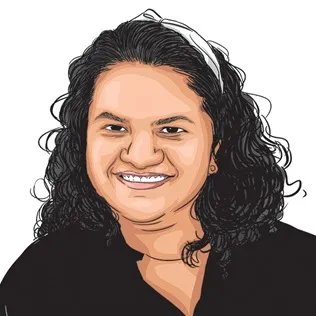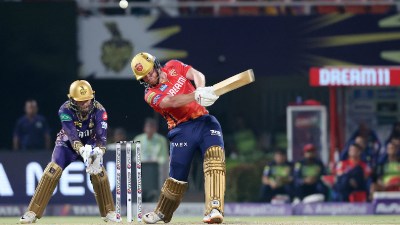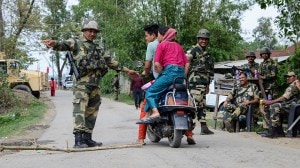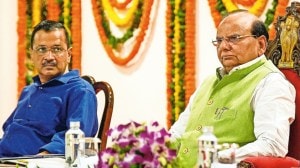- India
- International
Waheeda Rehman conferred with Dadasaheb Phalke Award: How her films have depicted the ‘Bharatiya Nari’
The Dadasaheb Phalke Award is considered the highest such honour in Indian cinema, recognising outstanding contribution to the field. How has Waheeda Rehman played a part in this regard? And who won this award in the past?
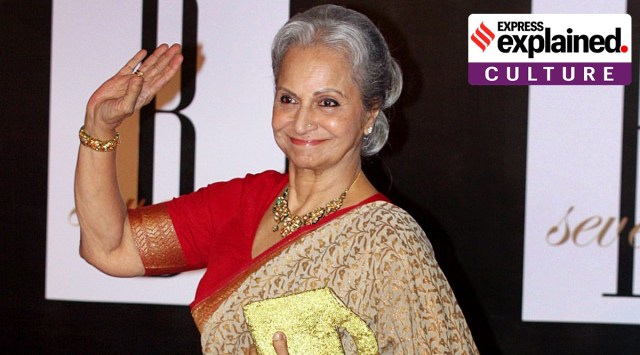 Veteran actor Waheeda Rehman at an event in Mumbai in 2011. (PTI Photo)
Veteran actor Waheeda Rehman at an event in Mumbai in 2011. (PTI Photo) Veteran Bollywood actress Waheeda Rehman, 85, has been conferred with the Dadasaheb Phalke Award, which is given for “outstanding contribution to the growth and development of Indian cinema”, for the year 2021 by the Union Ministry of Information and Broadcasting’s (I&B) Directorate of Film Festivals.
The award is presented at the National Film Awards ceremony. The 2021 awards were given out this year as they were delayed due to the Covid-19 pandemic.
I feel an immense sense of happiness and honour in announcing that Waheeda Rehman ji is being bestowed with the prestigious Dadasaheb Phalke Lifetime Achievement Award this year for her stellar contribution to Indian Cinema.
Waheeda ji has been critically acclaimed for her…
— Anurag Thakur (@ianuragthakur) September 26, 2023
While announcing Rehman’s selection on X, I&B Minister Anurag Thakur also linked her winning the award with the recently passed women’s reservation Bill in the Parliament, saying, “Waheeda ji has exemplified dedication, commitment and the strength of a Bharatiya Nari … Her being awarded with this lifetime achievement award is a fitting tribute to one of the leading ladies of Indian Cinema and one who has dedicated her life after films to philanthropy and the greater good of society.”
 In this March 24, 2011 photo, Waheeda Rehman is at the Padma Awards 2011 ceremony at the Rashtrapati Bhavan in New Delhi. (PTI Photo/Shahbaz Khan)
In this March 24, 2011 photo, Waheeda Rehman is at the Padma Awards 2011 ceremony at the Rashtrapati Bhavan in New Delhi. (PTI Photo/Shahbaz Khan)
Prime Minister Narendra Modi too extended his congratulations. “Her journey in Indian cinema has left an indelible mark. A beacon of talent, dedication and grace, she embodies the best of our cinematic heritage,” he wrote on X.
Who is Waheeda Rehman?
Born on February 3, 1938, Rehman has been working in the Indian film industry since 1955, when she made her debut as a dancer in the Telugu social drama Rojulu Marayi. In her biography Conversations with Waheeda Rehman, author Nasreen Munni Kabir writes that the film’s song ‘Eruvako sagaro ranno chinnanna’ became a rage, and Rehman became as famous as the film’s leading stars, Akkineni Nageswara Rao (ANR) and Sowcar Janaki.
Rehman tells Kabir: “The film was such a big hit. The cast was invited all around Andhra to celebrate its success and at the end of the tour we arrived in Hyderabad. That’s where I met Guruduttji for the first time.”

She adds: “Rojulu Marayi means ‘days have changed’, and the title perfectly describes that moment in my life.”
After her meeting with Guru Dutt, a leading Hindi film personality at the time, Rehman eventually travelled to Bombay and was cast in Raj Khosla’s CID (1956), in which she played the role of a ‘vamp’ against matinee idol Dev Anand. The film became the highest-grossing film of that year.
Her next film Pyaasa (1957), directed by Guru Dutt and starring him in the lead role, won her critical acclaim in her role as a courtesan. She would go on to become one of the most sought-after leading ladies in the 1950s and ‘60s, a period often referred to as the ‘Golden Age of Hindi cinema’.
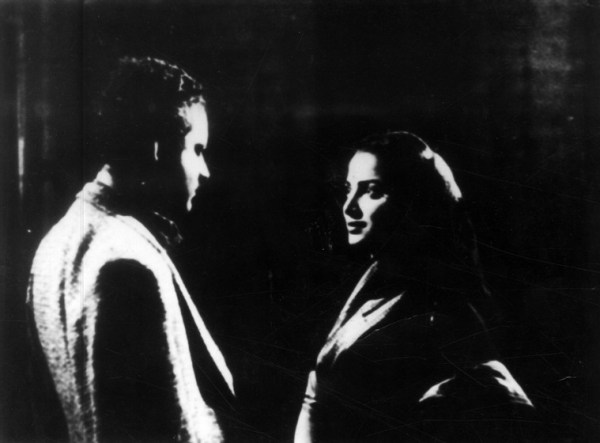 Film stars Guru Dutt and Waheeda Rehman. (Express archive photo)
Film stars Guru Dutt and Waheeda Rehman. (Express archive photo)
In 1971, she won the National Award for Best Actress for Reshma Aur Shera, a love story directed by and co-starring Sunil Dutt. She was nominated for the Filmfare Awards several times, winning for Guide (1965) and Neel Kamal (1968).
Other films that won her praise are Kaagaz Ke Phool (1959), Sahib Bibi Aur Ghulam (1962), Abhijan (1962), which was directed by Satyajit Ray, Teesri Kasam (1966), Ram Aur Shyam (1967), Khamoshi (1969), Kabhi Kabhie (1976), Namkeen (1982), Lamhe (1991), 15 Park Avenue (2005), Rang De Basanti (2006), and Vishwaroopam II (2018).
How have Waheeda Rehman’s roles reflected the changing aspects of womanhood?
Rehman commanded immense star power at the peak of her career in the ‘60s. In several films from that era, she got top billing ahead of her male co-stars; some examples include Neel Kamal, Shagoon (1964), Patthar Ke Sanam (1967), and Khamoshi (1969).
Several of her films had her playing an unconventional lead heroine, pushing the boundaries of mainstream Hindi films with every attempt. In Pyaasa, she perfected the trope of the ‘hooker with a heart of gold’ (in which a sex worker or courtesan displays virtues like kindness, generosity, and integrity) in Hindi cinema, and would set the standard for films that came later, like Pakeezah (1970), Umrao Jaan (1981), Gangubai Kathiawadi (2022), and more.
In her most famous film Guide, Rehman played Rosie, the daughter of a courtesan who wanted her child to avoid her fate. But Rosie, who is married off to an archaeologist who is more concerned with respectability than companionship, is not willing to be stifled. The film shows her walking out on her husband after a dramatic scene in which she lashes out against him, eloping with a tour guide, and becoming a successful dancer.
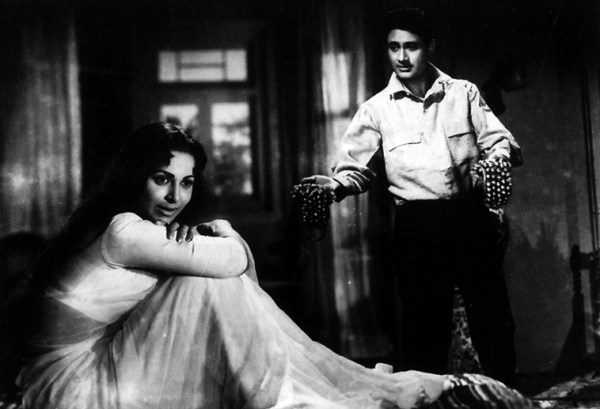 Waheeda Rehman and Dev Anand in Guide. (Express archive photo)
Waheeda Rehman and Dev Anand in Guide. (Express archive photo)
She later throws out the tour guide from her life as well, once she realises that he too is using her for his own gains. Even today, a woman in a mainstream Hindi film who walks out on both her husband and lover would cause a sensation — Rehman’s Rosie did it way back in 1965.
Rehman won the National Award for Reshma Aur Shera, in which she played a feisty Rajasthani woman, who dares to fall in love with someone from an opposing clan. Her performance, dialogue delivery, and chemistry with her co-star Sunil Dutt, left a lasting impression, and elevated the film from a standard Romeo and Juliet narrative.
In Gulzar’s Namkeen, Rehman played Jugni, the matriarch of a small family in rural Himachal Pradesh. Through her spirited performance, Rehman showed how women can be self-sufficient and how often wives have to struggle against their husbands to protect their children from hardships — like the ones they have experienced.
Other films which show her grappling with the anxieties of womanhood are Khamoshi, in which she plays a nurse working in a psychiatric facility who is unable to separate her working life from her psyche; the lesser-known Zindagi Zindagi (1972), in which she plays a single mother reunited with her former lover who she could not marry due to caste differences; and 15 Park Avenue, where she plays an ageing mother caring for her daughter afflicted with schizophrenia.
What is the Dadasaheb Phalke Award? How has it recognised women in the past?
The Award was constituted in 1969, to commemorate the contribution of filmmaker Dadasaheb Phalke to Indian cinema. Phalke directed India’s first full-length feature film, Raja Harishchandra, in 1913, laying the foundation of the biggest film industry in the world.
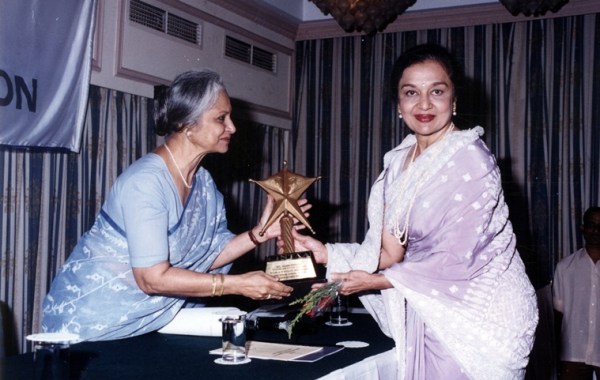 Asha Parekh receiving her Cintaa Trophy from Waheeda Rehman. Both the actresses have been awarded the Dadasaheb Phalke Award. (Express archive photo)
Asha Parekh receiving her Cintaa Trophy from Waheeda Rehman. Both the actresses have been awarded the Dadasaheb Phalke Award. (Express archive photo)
The Award comprises a Swarna Kamal (Golden Lotus) medallion, a shawl, and a cash prize of Rs 10 lakh. The first recipient was Devika Rani, who is widely acknowledged as the ‘First Lady of Indian cinema’, and was a pioneering force behind some of the earliest successful films in India through her production house Bombay Talkies.
One of the most popular Bombay Talkies films was Achhut Kanya (1936), starring Devika and Ashok Kumar. It depicted a love story between a Dalit girl and a Brahmin boy, and directly challenged the caste hierarchies prevalent in the country.
Last year, veteran Bollywood actress Asha Parekh won the Award for her contribution to Hindi cinema and television. She started her career as a child actor in 1952 and went on to become one of the highest-paid actresses in Bollywood in the late ‘60s and ‘70s.
Other women who have been awarded the prestigious honour are the singing legends Lata Mangeshkar and Asha Bhosle; actor-producer Durga Khote; Ruby Myers, who was better known as Sulochana, and is regarded as the “first sex symbol of Indian cinema”; and actor-singer-producer Kanan Devi, considered “first lady of Bengali cinema”
More Explained
EXPRESS OPINION
Apr 27: Latest News
- 01
- 02
- 03
- 04
- 05











